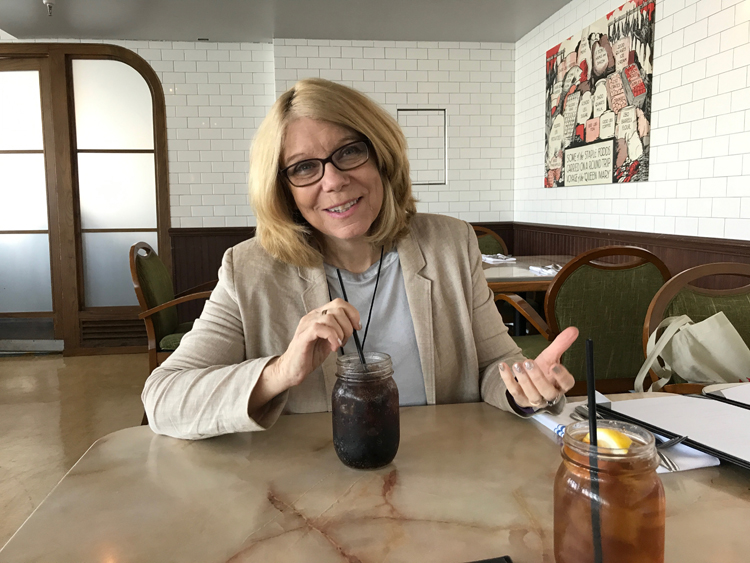The Poison Apple: Remember Buffy? An Interview with Tie-in Author Nancy Holder
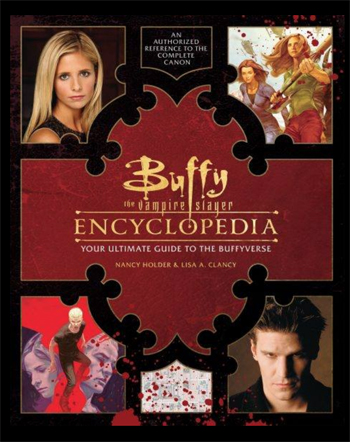
Let’s talk about Buffy the Vampire Slayer.
When I was doing the episode guidebooks for Buffy, I was taping Joss Whedon… Remember when Spike moves into the crypt? It was pitch-black dark in there and we were sitting on the crypt for our interview. It had been hard to get him, because he was been busy. I had sat waiting and waiting with these old-fashioned tape recorders that looked like movie cameras, and for both of them the batteries had run down and the tape was spooling out. When we got outside in the bright sunlight, I saw what had happened. I had been going for days without much sleep and there was my interview with Joss… not. The first thing I did was say the f-bomb and then, “Why you? Why you?”
He fixed the tape and said, “It’s okay.” I put more batteries in and asked, “Can you say everything you said over again? And he said, “I’ll try.” I was so embarrassed. But we got it done, and he was great. So articulate and smart.
How often did you get over to the set?
If you add all the days together, I was probably on the Buffy set for the total of a month. I was over on Angel, maybe a week or two.
Buffy had been set up in some empty warehouses in Santa Monica in this place called Bergamot Station. Mutant Enemy was there, and they had all the Buffy stuff there plus the writers offices and post production for Angel. When you went to Angel, it was very Hollywoody, because it was on the Paramount lot. You had the golf cart guys, the scrolly gates at the front…
Of course, the famous Paramount gates.
It was very different experience.
How did you get involved in that?
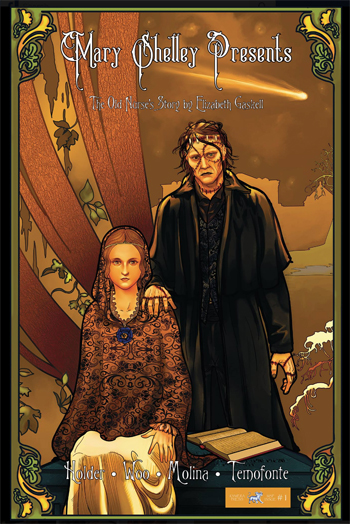 The way I got involved in Buffy was that I was had gotten known as a romance writer. Then I started writing horror. So, I made friends through the Horror Writers Association, HWA. There was a woman in HWA who had been a horror editor, Alicia Condon. She moved publishing houses and a friend named Scott Ciencin told me told me she was going to be bidding for the rights for a show that was going to be on the air in a specific time slot and night. Immediately, I knew what it was. Like any good horror person I was waiting for Buffy.
The way I got involved in Buffy was that I was had gotten known as a romance writer. Then I started writing horror. So, I made friends through the Horror Writers Association, HWA. There was a woman in HWA who had been a horror editor, Alicia Condon. She moved publishing houses and a friend named Scott Ciencin told me told me she was going to be bidding for the rights for a show that was going to be on the air in a specific time slot and night. Immediately, I knew what it was. Like any good horror person I was waiting for Buffy.
Scott told Alicia I was interested in writing Buffy. I had also written a tie-in for the TV show, Highlander. With my track record of that plus working in romance and horror, I was a good fit for a show like Buffy.
Well, Alicia did not get the rights, but she told me who did: Lisa Clancy at Simon and Schuster. My daughter had just been born. So, I asked Christopher Golden if he wanted to collaborate. We immediately faxed Lisa a slew of ideas for a story. She picked one and we got our agents involved for a deal. Then we had three and a half weeks to write the book. Of all things, my babysitter quit the day we got our agreement.
Scripts were immediately FedEx’ed to us. There were more of them by Joss than weren’t, so we paid attention to those. We also noticed that Buffy and her friends were going to talk in an odd way. We called it, “Buffyspeak.” We made our own dictionary. Then we made an outline. Then we flipped a coin and one of us took the even chapters and the other one took the odd. Then we’d write chapter one and chapter two then swap.
Afterward, we found out they had an office pool over at Simon & Schuster as to whether or not we’d make their deadline. Because we made it, we got more jobs and more jobs.
How many pages was this, because you’re talking about an hour episode?
This was the very first original novel based on Buffy. So, we had to come up with ideas and a plot. It was called Halloween Rain, and the ironic thing about it…
So, it wasn’t just a novelization of an actual episode.
No, but the funny part about it now is Buffy came out in March, so there hadn’t been any discussion on the show about Halloween. So, we wrote a story about Halloween, and our assumption was that Halloween would be crazy time for the Slayer, but it’s not. In the Buffy mythos, vampires stay home on Halloween, because they think it’s a tacky commercialization and they don’t go out. But, nobody knew that yet. So, our story was about how scary Halloween was.
However, it was shorter because Simon & Schuster had a young adult line they wanted this for, so the word count was less than an adult novel. Soon, they realized people wanted to read the adult novels, so they scrapped the young adult line.
Because we turned it in and did a good job and everybody like it we got another one and another one and another one.
Nancy Holder being interviewed by Elizabeth Crowens on the Queen Mary at Stokercon 2017
Were you living in the same city?
No, Chris lives in Massachusetts and would get the episodes first, because they’re three hours ahead of me on the West Coast. We wrote novelizations, which were recapitulations of the episodes, and we also wrote original novels, novellas and short stories based on the Buffy universe. Eventually, Chris and I couldn’t work together any more, and we each took on individual projects. I also worked with Jeff Mariotte, Maryelizabeth Hart, who is now Maryelizabeth Yturralde, and Keith de Candido… we in various shapes and forms worked on projects together.
Jeff and I worked on a lot of Angel books together. We had Buffy and Angel crossovers, as well. A crossover means that we had to have authorized permission from both the Angel TV show and the Buffy TV show to write adventures that pulled characters and settings from both shows.
So, you didn’t do anything with the original scripts?
Yes, I novelized them. I would find a common theme, such as three of Buffy‘s birthday episodes, then create new material to tie the three stories together, then turn the scripts into prose form with thoughts, exposition, etc.
I did a lot of projects on my own. Altogether, I’ve done over four dozen Buffy and Angel projects, and I’m still doing that.
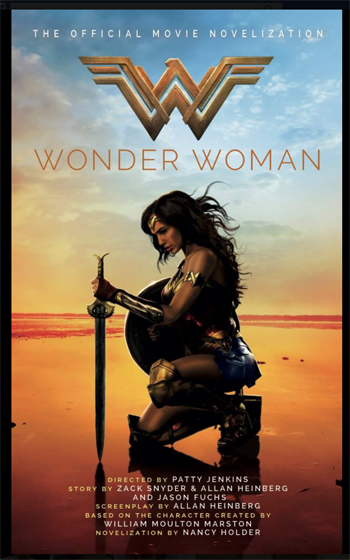
And you just had your 20-year anniversary of Buffy.
Yes. Lisa Clancy, who was my original editor ,and I just did an encyclopedia together for HarperCollins. Our editor was Paul Ruditis, who had written for Lisa as well. Lisa did the Angel side, and I took the Buffy side, which included all the comic books, of which there are legions. We had to stop at some point, obviously, so I only did comic books that were canon. There’s some new Buffy comic book stuff that’s coming out… like a return to high school, but I couldn’t cover it due to time constraints.
So what happened was that after Buffy went off the air… Season 7 was the last televised canon season of Buffy… Season 8 of Buffy continued in the canonical story in comic book form from Dark Horse Comics. They have gotten to Buffy Season 11, and all those issues are considered part of the story. So when we did the encyclopedia, I incorporated all those comic books. A complicating factor would be that someone would have died on the show, then come back in the comic books. The entries became quite complex. It was quite time-consuming but really fun.
Have you always been a writer?
I had those little jobs that everybody has before I could establish myself as a full-time writer, but the answer to your question is that I started writing as a little kid, but I really wanted to be a ballet dancer.
I was waiting for that.
So, I dropped out of high school and moved to Germany.
Where in Germany?
I was in Cologne. Then I moved to Frankfurt, but it didn’t pan out. I got injured, and also I realized I was so-so, but I was never going to be the ballerina, and I decided I was done. Although I would have stress dreams for years where people would say, “If you had one more chance to be a ballet dancer… it is right now! You can dance for us.” Those dreams have gone away, but I would’ve long retired from dancing by now anyway.
You have a very short shelf life as a dancer anyway. That’s so funny that I thought you were going to say something like this.
Eventually I finished both high school and college, but throughout this period another college writing student named Alex and I took private seminars from a professor, John Waterhouse, and he started encouraging me to send some of my writing out on submission. But it all came back — rejected left and right.
What was your major? What were you thinking of doing at the time?
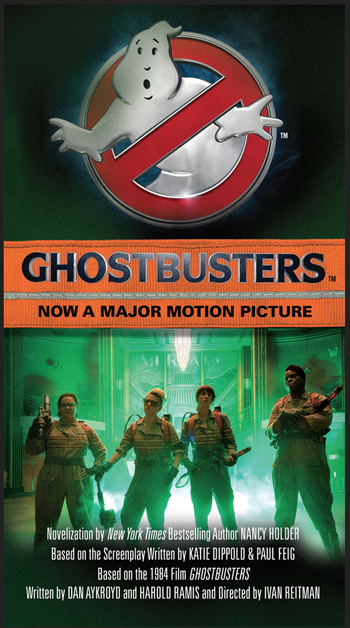 Communications at UC San Diego. Everything would come back rejected and I graduated with absolutely no idea how to support myself. I thought I’d go back to college to be a speech therapist, but then I decided to get my MBA in Finance instead, which you’d never believe if you knew me. I lasted a couple of semesters and just thought it was wrong. Then I went to the English department and asked about MFA’s. They said, “We’ll walk you through registration.” But when I asked, “What do you do with an MFA?” they replied, “Well, we’re working on that.”
Communications at UC San Diego. Everything would come back rejected and I graduated with absolutely no idea how to support myself. I thought I’d go back to college to be a speech therapist, but then I decided to get my MBA in Finance instead, which you’d never believe if you knew me. I lasted a couple of semesters and just thought it was wrong. Then I went to the English department and asked about MFA’s. They said, “We’ll walk you through registration.” But when I asked, “What do you do with an MFA?” they replied, “Well, we’re working on that.”
Oh God, no…
I had already made a vow to myself not to have any more wackadoo careers like being a ballet dancer, but I was pondering that MFA. I figured that you either go to school or be a writer, and if you want to be a writer just stay home and write. So, I didn’t get my MFA, but I started writing and sold my first novel about a year and a half later. I wrote young adult novels under a pseudonym and a few short, category romance novels under my own name, and then I sold my first horror novel as well as Highlander. So that’s how everything moved into the direction of Buffy and horror.
And at that point when you were working on Highlander you had made some connections with publishing companies that proved you were really good at this tie-in stuff?
What actually happened was I hit a lull. I had sold tons of short stories mostly to horror anthologies and loved it. Many of these publications come and go. I sold to After Hours, which is not around any more. At the time, I worked part-time at Mysterious Galaxy Bookstore in San Diego. One day I was dusting the Highlander novels and said out loud, “I wonder if they are looking for more authors.” So, Maryelizabeth Hart, one of the owners, contacted the editor saying that she had an award-winning author wanting to know if she needed any more Highlander writers… and it worked! So, I sent thirteen story ideas over there, they picked one, and that’s how I got my Highlander gig. I watched a ton of Highlander… tons… just to come up with those ideas and then I sent them in.
When was this?
Probably the 90s, because Buffy didn’t even come on the air until 1997. My daughter was born in 1996, so it had to be right around that time. It was a hard job. My first tie-in was very difficult.
How many pages was it?
Probably about 80,000 words. Highlander was made in Canada, but to my happiness a woman over there really championed having tie-ins written since the producers had never heard of anything like that. Her name is Gillian Horvath and she became my handler on that project. I’m going to see her today. We’re still friends after all these years. She’s been a writer and an executive producer on many shows, including the rebooted Beauty and the Beast, for which I wrote three books. She also turned me on to a job where I wrote a few books for Harlequin. Harlequin launched a new woman’s action-adventure line, and Gillian had written for Xena, so they contacted her about writing for them. She said, “I can’t do this, but I might know someone who can.” Then she and I met up for breakfast at a convention and she told me about the gig. I got it! Unfortunately, the books didn’t sell well. The line was called Silhouette Bombshell.
So, this was like a romance action heroine?
Yes.
A period piece?
No, modern, I called them Jane Bond. They were really fun to write, but I think the problem was they were marketed to romance readers, but they weren’t really romances. So, who was going to read them? There was another Harlequin line published by the Gold Eagle side of the company called Rogue Angel, which had almost exactly the same premise. It did really well and was marketed to men first. Gold Eagle had more science fiction and men’s action-adventure. The sad part of the story is that when Harlequin was sold to Harper Collins, they canceled the whole Gold Eagle division.
People tend to poo-poo Harlequin, but they are a really awesome company. In fact, back when I wrote for them, in order to work as an editor at Harlequin, an editor either had read Robert McKee’s Story and give a report on it or go to one of McKee’s seminars. Harlequin editors know their craft. The Romance Writers of America? They know what they are doing. I think the hallmark of the Harlequin brand right now is Harlequin Teen. They are publishing some of the most edgy, young adult material out there — cool, weird stuff. Harlequin is good to authors, and if they’re not, the Romance Writers of America has sufficient funds to step in.
What are some of the pseudonyms you’ve used?
I wrote two YA romance novels as Wendi Davis. Also Laurel Chandler, and I picked Chandler because of the Dorothy Chandler Pavilion. Those are the main ones. I wrote middle grade material under the collective house names Nicole Clarke and Melissa J. (? Morton), and I was Carolyn Keene over at Nancy Drew, and there are legions of Carolyn Keenes. (The books are ghostwritten by a number of authors and published under the collective pseudonym Carolyn Keene. The same is true of Nicole Clarke and Melissa J. Morgan) There was a lot of hope that after the Emma Roberts movie came out that there would be a huge resurgence of Nancy Drew interest so they ramped up a big publishing program. My part in Nancy Drew was called Nancy Drew, Girl Detective, and I wrote four novellas that were ghost stories. Then I had a friend who did Nancy Drew and the Clue Crew for a younger readership. We were hoping we’d have all these Nancy Drew assignments, but that didn’t happen.
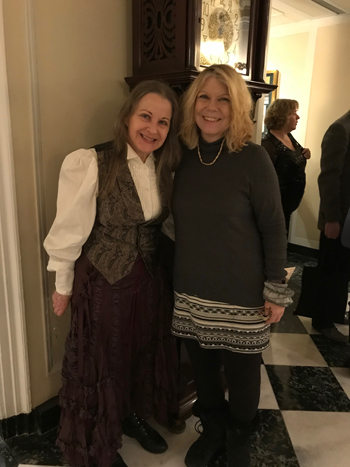
Have you ever pitched or tried to revive something cold as opposed to being approached by an existing series?
Not too much in tie-ins because I know how the business works, because the publisher would has to get the license first. Because I loved working on it so much, I did propose writing a prequel to Guillermo de Toro’s Crimson Peak. I novelized the movie. But because we don’t know which way GdT is going to go and whether or not there’s going to be another movie, there was no way for me to do it. Which I knew going in, but I thought I would take the chance. That’s why I don’t usually do that. It’s already a complicated situation anyway. I think of things like, “Wouldn’t this be cool if?” and do that within the confines of the tie-in book I’m working on. I did try to kill Kennedy off in Buffy. Kennedy had become an important character, and they said, “No, you cannot kill Kennedy.”
Mostly, I just scout around to see who is looking for what, and can I be a fit for a specific project.
In your wildest dreams did you think you would be doing these novelizations? When you were considering that MFA way back when, did you ever picture your career going in this direction?
No, never, and it’s funny, because I still don’t have an MFA, but I teach in an MFA program — Stonecoast, which is offered through the University of Southern Maine. It’s a low residency program. I actually went to my administration to see if I could get my MFA through them, because it’s so cool. They said, “You could quit working. Get your MFA, and we’ll hire you back.” But that’s two and a half years. So, I didn’t want to do that. I have to say that the only thing I regret in life is that I didn’t get my MFA, but a lot of MFA programs try to drill the love of popular fiction out of you. So, I may have never sold a thing in my life had I gone that route earlier on. Stonecoast, however, does promote popular fiction and here… at Stokercon right now, there are six Stonecoast people. It’s a really amazing program, and I got hired because they were looking for a horror instructor.
Well, I can’t tell you how invaluable it was when I took your class at the 2016 Stokercon Horror University on How to Write Scary, but I’m curious since I also ran into you at the BSI weekend that same year if you are writing a Sherlock Holmes pastiche. It was so odd running into you there. I figured you must be writing Sherlock, the Vampire Slayer.
That would be awesome. Charles Prepolec, of Edge Publishing out of Canada, bought a story from me for Gaslight Gothic. Recently, I bought Lyndsay Faye’s new book, The Whole Art of Detection, and it’s so good.
That’s a non-fiction book, correct?
No, it’s a Sherlock pastiche collection of short stories. They are all mysteries she created, and they are so clever and very Conan Doyle. I worry that I’ll make a mistake, because there is so much Sherlock to keep track of. I’m a big Sherlockian and have been re-watching the Granada series, and then I have the stories and novels read by this BBC guy, David Timson, and I’ve been listening to them. Then I have my scion The Sound of the Baskervilles, which is in Seattle.
Have you been to London?
Yes. In fact, Roger Johnson, of the Sherlock Holmes Society of London, took me on a walk through the Baker Street area, and we ate at Speedy’s. I posted a note to Benedict Cumberbatch on the door that is 221B in the show. This “stunt door” was covered with love notes, so I wrote a little one that says, “NH + SH.” I haven’t been to all the Sherlockian sites but that’s my next goal.
Now, they’ve got people doing novelizations of the BBC Sherlock.
Original novels for Elementary. It’s kind of ironic, because I went to the World Fantasy Convention in Brighton, England…
Oh, so did I.
No way.
Absolutely, but we didn’t know each other back then.
Oh my God.
I scheduled my whole two-month UK research trip around that convention.
Well, I was on a panel of tie-in writers, and they asked us if there was anything we’d like to do that we haven’t gotten to do. I said I’d like to do a movie, and I would like to write for Elementary. Then I thought, why did I just say that, because half the time when I watch Elementary, I don’t get the mystery or get to solve it, and I feel really dumb. Then I thought, why the heck did I say that? If I ever got one for an assignment, I didn’t think I could ever do it. So, an editor came up to be afterward and said, “We are looking for three Elementary authors so we should stay in touch.”
So did you?
No, I never did it. I think they didn’t want an American, which is fine… whatever.
That’s so odd they didn’t want an American. It’s filmed in New York.
It was funny, because I came home and started watching Elementary like a maniac… There was a book, Leslie Klinger did the forward, and it was called How to Think Like Sherlock Holmes. So, I bought it thinking maybe this will help me figure out how to write Elementary books. Instead Titan offered me the opportunity to write novels based on the CW reboot of Beauty and the Beast (the show Gillian Horvath eventually co-executive produced). I wasn’t sure what happened to Elementary, but I did write three books based on the latter, and they’re mystery/police procedurals. It’s neat that we’re conducting this interview on the Queen Mary, because my last Beauty and the Beast book was set on a cruise ship. So, I never did Elementary and would’ve been very nervous if I had actually been offered the job. I just blurted it out at the panel. Maybe I shouldn’t have said that… put up or shut up, right? After Beauty and the Beast I got my first lovely Titan movie novelization, Crimson Peak.
Any more Sherlock possibilities?
I’ve written other Sherlock stuff. I’ve written SH pastiches, comic books for Moonstone, and a game for the Storium game company. I’ve written two games for them. Each game is a storytelling game with cards. The catch is you’re supposed to make your own story up. Since my Sherlock Holmes game is mystery-based, my editor and I needed to give more clues than just creating a normal story, which made it harder than usual. My first project for them was based on Dracula. I had originally pitched Sherlock Holmes, but the court case regarding putting Sherlock Holmes in the public domain was still in process, so they wanted to wait before doing anything related to Holmes. Once the court case was resolved, they came back and said, “Okay, we’ve done Dracula with you. Now, would you like to try Sherlock?” I said, “Sure.”
So, I did a Sherlock Holmes game called The Unsolved Cases of Sherlock Holmes. Some of the Holmes stories are adventure stories and some of them are mysteries. So I wrote my game so people could either play it as an adventure or solving a mystery. Besides the standard core of Sherlock characters, I created new ones such as a niece of Moriarty. They all come to London during the Great Hiatus when they think Holmes is dead. Watson is trying to keep things going and trying to help Inspector Lestrade, so the vacuum created by the absence of Holmes with locations such as gambling halls and opium dens. I kept writing suggestive little bits such as, “Was that Holmes who just went around the corner?” Then they said, “You have to tell the Game Master whether or not Holmes is really alive.”
So, I had to decide. As a horror writer, you can be a bit more figurative. Mystery people tend to be more literal. So, I had to inform the Game Master that he was alive and play my hand a little, but it was really fun. I found out all kinds of stuff about London in the Victorian age. My editor and I had not known, for example, that there was an underground subway system in 1897.
When did you create this game?
I finished it in 2016. You can go online and join Storium. Then you can pick my worlds, and I have two of them. One is called Nancy Holder’s Dracula, and the other would be The Unsolved Cases of Sherlock Holmes. You log in, and I think you pay a membership fee. It’s all online.
That’s the first time you got involved writing for a game?
Oh no. My ex-husband was the founder of a company called FTL Games, which in the eighties was one of the most famous game companies in the world. He and his programmers were groundbreaking game designers, and he created the first real tie-in, role-playing game. When his games came out in Japan, the competition didn’t even bother trying to release anything. They called him the Black Ship. He also created the first programmed spelling checker and was licensed by Microsoft for a while. He was a very inventive entrepreneur, and we owned a game company. One of the games he was known for was Dungeon Master. This was the early days of computer games when the environment was very “garage band-like.” As the company matured, big companies like Sony and Electronic Arts came in and took over the marketplace.
When you started writing, were you thinking along the lines of literary fiction rather than writing for games?
Actually, no. When I was taking classes at UCSD with Professor Waterhouse, I wrote a horror novel, and he said it was the funniest parody of a horror novel he had ever read. But it was not a parody, and I was crushed, just devastated.
And little did you know where your career would wind up.
I wish I could thank him, but he moved on from UCSD, and I lost touch with him. I even dedicated a book to him hoping he’d hear about it through the grapevine.
More can be found on Nancy Holder at her official website: nancyholder.com.
Elizabeth Crowens is a Hollywood veteran, journalist and author of Silent Meridian, a 19th century X Files / alternate history novel series. It won First Prize for Chanticleer Review’s Goethe Awards in Turn of the Century Historical Fiction and was short-listed as a finalist for their 2016 Cygnus Awards in Speculative Fiction, Paranormal and Ozma Fantasy Awards. www.elizabethcrowens.com, Facebook: @BooksbyElizabethCrowens, Twitter: @ECrowens
